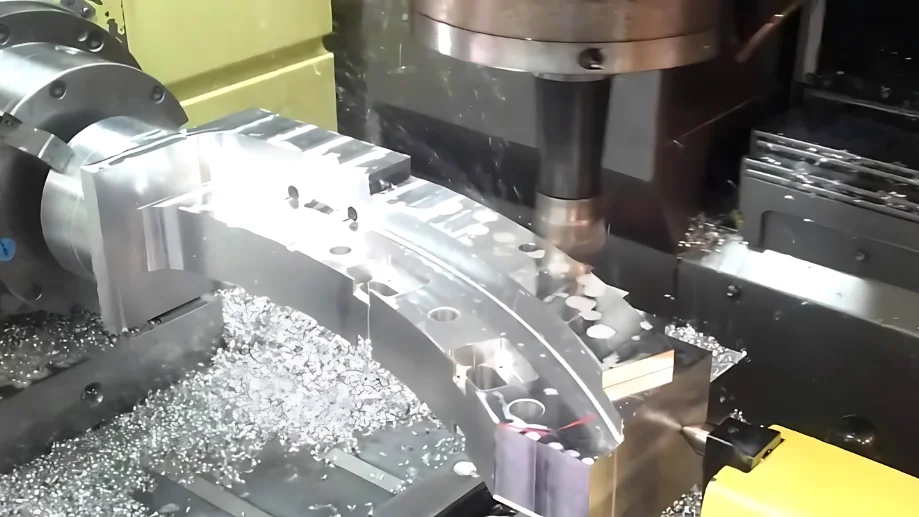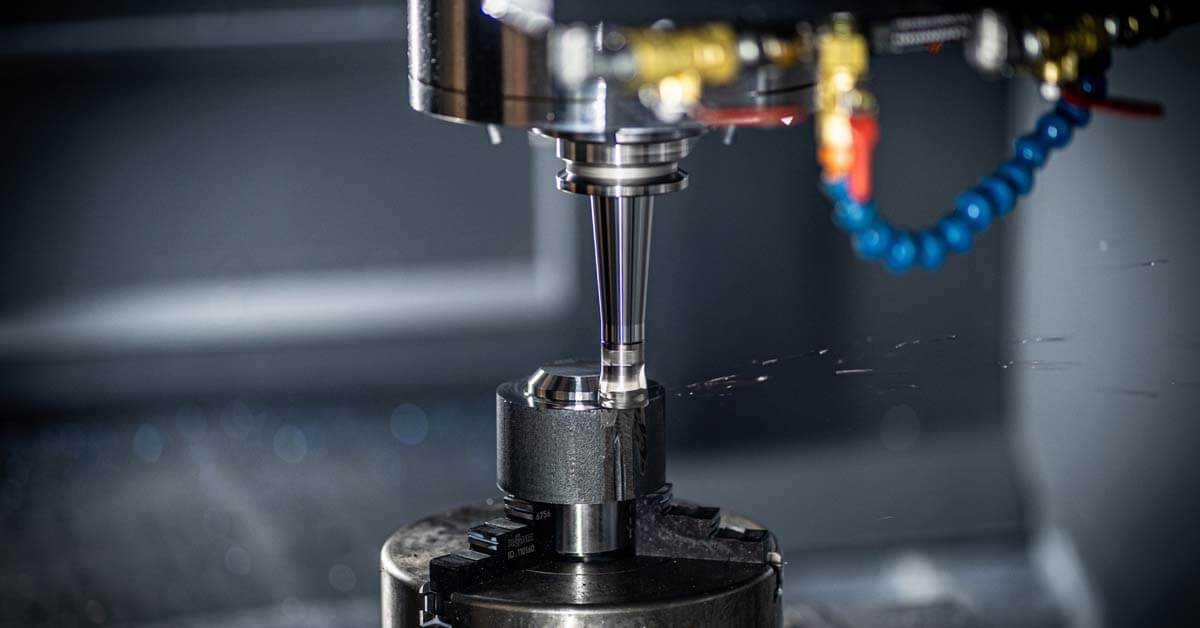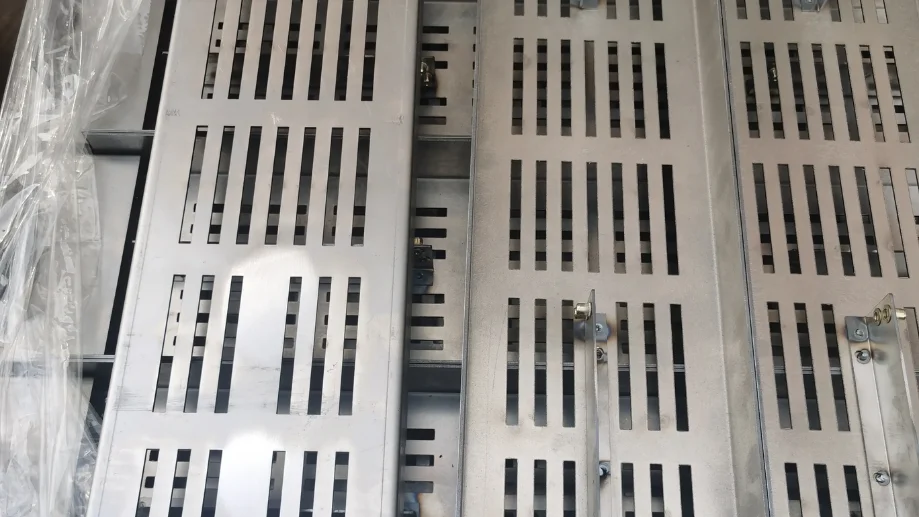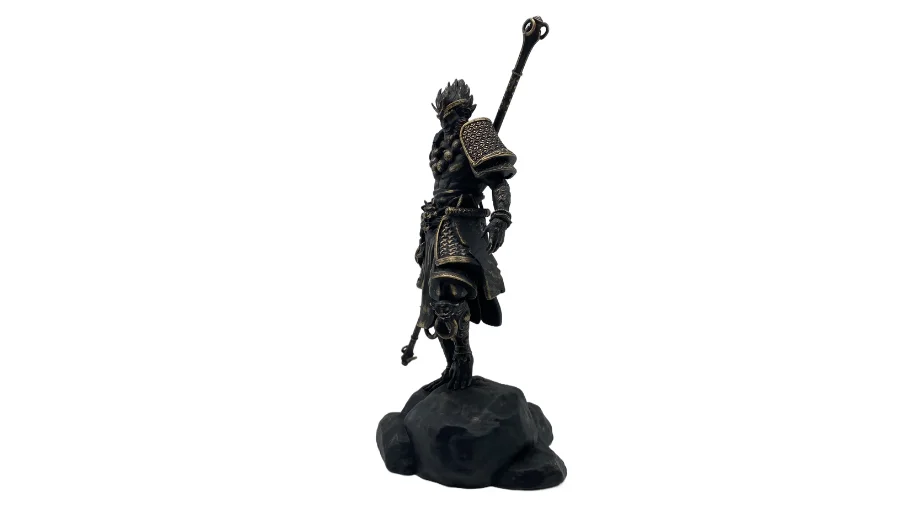Table of Contents
Coordinate Measuring Machines (CMMs) are an important tool for modern measuring and inspection of parts. It can measure all three orthogonal axes to capture accurate 3D data. Below you will find a detailed description of what CMMs are, how they work, and the key benefits of CMMs.
What is a CMM?
A Coordinate Measuring Machine (CMM) is a sophisticated tool used to measure the dimensions of an object in all three orthogonal axes (X, Y, and Z). This capability allows it to capture precise 3D data efficiently. Unlike traditional single-axis measuring instruments, a CMM can quickly and accurately handle the measurement of complex objects. These machines are essential in various industries for ensuring product quality and precision.
One of the standout features of a CMM is its integration with a computer. This integration not only enhances measurement accuracy but also allows for the automation of measurement processes and data analysis.
CMMs come in various types, such as bridge, cantilever, and gantry models, each suited for different measurement tasks and environments. Whether you need to measure small intricate parts or large industrial components, a CMM provides the precision and versatility required to meet your needs.
Read More: 3 Axis CNC Milling Machine: What You Need To Know?
Key Features of CMMs
- 3D Measurement: CMMs capture point coordinates in three-dimensional space.
- Computer Integration: The onboard computer enables the creation of 3D models and complex calculations.
Precision and Speed: Ideal for inspecting complex objects efficiently.

Benefits of Coordinate Measuring Machine
Machine shops often use CMMs for reverse engineering to create custom designs or replicas of physical samples. In this process, a machinist moves a sensitive probe onto a physical sample, and the CMM then performs a series of operations to convert the sample into a 3D CAD drawing.
These CAD models can be used to create replicas of the samples using manufacturing technologies such as CNC machines and 3D printers. This reverse engineering application of the CMM is very useful when manufacturing obsolete parts, such as old automobile engines or gas turbine parts.
Read about: types of cnc machines
Automated Checking Ensures Quality
Although human operators can perform diagnostic measurements accurately, even trained experts inevitably make mistakes. In the midst of repetitive quality assurance tasks, people can become tired, inattentive, or even careless, which can lead to inaccurate measurements.
The CMM eliminates the possibility of human error. It digitally measures and analyzes parts while providing services such as dimensional analysis, CAD comparisons, tool certification, and reverse engineering, all of which are necessary for quality assurance.
Increased Efficiency
Once a CMM is set up, production time can be dramatically reduced. The inspection phase of the manufacturing process can be streamlined as quickly as possible while maintaining measurement accuracy. Depending on the specific model, CMM machines can also save valuable space on the shop floor. In addition, a quality CMM provides accurate measurements and prevents errors on the production line, thus reducing scrap and waste.
Customizable and Compatible
CMMs can be equipped with specialized software programs to operate the machine, and the software can be continually updated for maximum efficiency. Probes and other hardware can also be modified and upgraded to suit manufacturing needs.
Save Time and Money
Because of their speed and accuracy, CMM machines are an integral part of the manufacturing process. The production of complex tools is becoming increasingly common in manufacturing, and CMM machines are ideal for measuring their dimensions. Ultimately, they can reduce production costs and time.
How CMMs Work and Use It
Coordinate Measuring Machines (CMMs) operate within a defined cubic volume, determined by three perpendicular axes, each driven by a separate motor. Each axis is equipped with a precision measurement system that continuously records displacement from a fixed reference point. The third axis carries the probe, which contacts the workpiece, and the computer captures the displacements of all three axes.
CMMs perform two main functions. First, they measure the physical geometry and dimensions of an object using a contact probe mounted on the machine’s moving axes. Second, they verify whether the part matches the corrected design specifications. Here’s a step-by-step overview of how a CMM works:
- Placing the Part: The part to be measured is placed on the CMM’s base. This base is a stable, rigid platform made of dense materials to ensure measurement accuracy by minimizing external disturbances.
- Guiding the Probe: A movable gantry, equipped with a contact probe, is mounted above the base. The CMM machine controls this gantry to guide the probe along the X, Y, and Z axes, allowing it to scan the entire surface of the part.
- Capturing Data: When the probe touches a specific point on the part, it sends an electrical signal that the computer maps. By systematically touching multiple points on the part, the CMM measures its dimensions.
- Analyzing Data: After capturing the X, Y, and Z coordinates of the part, the next phase is analysis. The computer constructs features based on the collected data, verifying dimensions and geometry against the design specifications.
For CMM machines using camera or laser systems, the operational mechanism is similar. Instead of a contact probe, these systems use non-contact methods to capture precise measurements, further enhancing versatility and efficiency in complex measurement tasks.
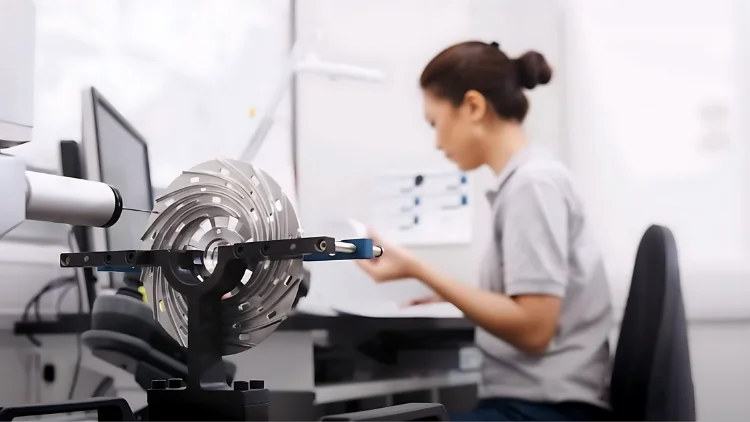
Types of CMMs
There are typically four different types of CMMs, each designed for specific measurement needs. Let’s take a look at each one:
Bridge CMMs
Bridge CMMs are the most common type. They have a fixed bridge with a moving table underneath. The bridge supports a probe, which moves along the X, Y and Z axes to measure the part. These machines are best suited for measuring mechanical parts with the highest accuracy and tightest tolerance requirements. However, they are limited to measuring small to medium-sized mechanical parts that can be easily lifted onto the table.
Gantry CMMs
Gantry CMMs are similar to bridge CMMs but are designed to measure larger parts. They have a gantry structure that moves on a fixed table. The gantry structure supports the probe, allowing it to accurately measure large and heavy workpieces. These machines are commonly used in the automotive and aerospace industries. Gantry Coordinate Measuring Machines (CMMs) are very similar to Bridge CMMs (CMMs) but differ slightly in design and functionality.
Gantry CMMs typically have a measuring range of (1 x 2 x 1 m) to (5 x 9 x 3 m) in a 3D coordinate system.
Cantilever CMM
Cantilever CMMs have a single arm that extends over the measuring table. The cantilever supports the probe and moves it along the X, Y and Z axes. This design provides easy access to the measurement area and is usually limited to measuring small mechanical parts, measuring instruments and standard parts.
Cantilever CMMs are known for their flexibility and ease of use. Supported by only one support point, they are not as rigid as gantry and bridge CMMs. When used to measure lightweight machined parts, their single point of support allows them to move faster and with greater accuracy than other CMMs.
Horizontal Arm CMMs
Horizontal arm CMMs are characterized by an arm that extends horizontally from a vertical column. The arm supports the probe and moves along the X, Y and Z axes. Horizontal arm CMMs are less accurate than other types of CMMs. Nevertheless, they are the ideal type of CMM for measuring large thin-walled sheet metal parts.
CMMs come in three main types based on their operation modes:
- Manual CMM: The operator manually moves a free-floating probe along the machine’s axes to establish contact with part features.
- Semi-Automated CMM: Features an electronic digital display for measurement and performs many functions, like setting the datum and converting dimensions, electronically.
- Computer-Controlled CMM: Equipped with an onboard computer for increased versatility and reliability, these machines use software for programming, measurement commands, and data processing. They operate similarly to CNC machines.

Conclusion
Coordinating measuring machines is very important in today’s manufacturing and quality control processes. Their flexibility, accuracy, and efficiency make them an essential part of any modern production environment. Whether you are dealing with complex objects or high unit costs, CMMs can streamline your inspection process, saving time and resources.
If you want to use it in combination with manufacturing programs such as CNC machining and 3D printing. Choose us for an online quotation and short delivery times at low cost.

Lucas is a technical writer at ECOREPRAP. He has eight years of CNC programming and operating experience, including five-axis programming. He also spent three years in CNC engineering, quoting, design, and project management. Lucas holds an associate degree in mold design and has self-taught knowledge in materials science. He’s a lifelong learner who loves sharing his expertise.




















